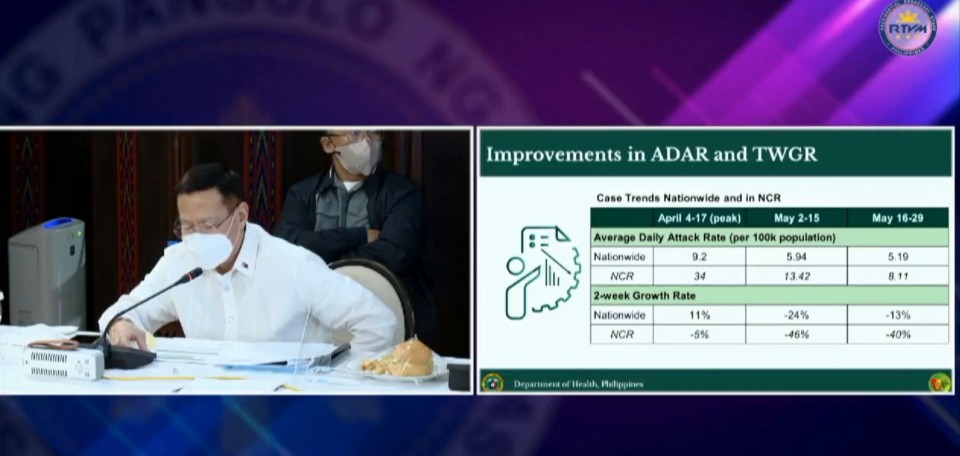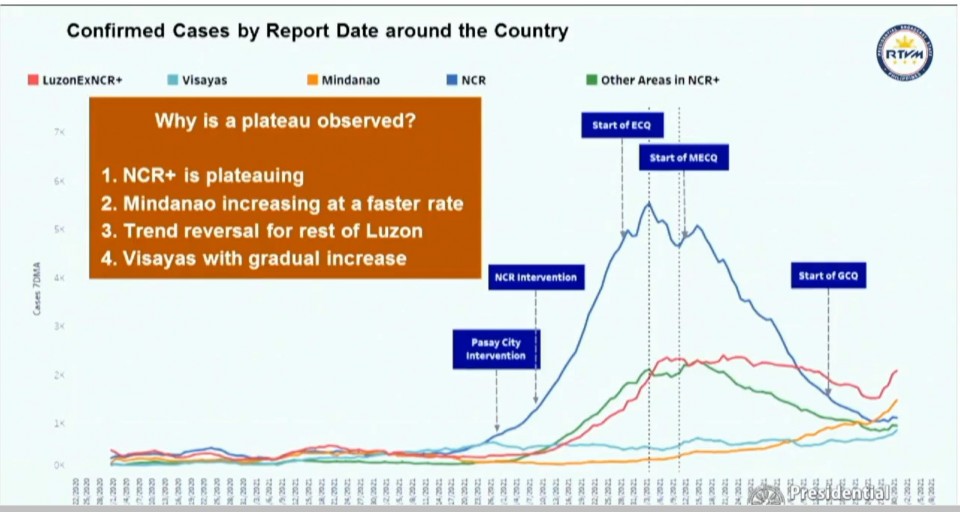DOH chief says NCR “not yet out of the woods” as 8.11 people infected per 100k of population

(Eagle News) – The Department of Health reported an alarming rise in COVID-19 cases in Mindanao, while cases in Visayas are slightly increasing.
Health Secretary Francisco Duque III said that the DOH is focusing now on Mindanao as there are more cases reported in Mindanao than in Metro Manila where cases are now decreasing.
“Bumibilis din naman ang pagtaas ng kaso sa Mindanao kaya binabantayan po natin ang Mindanao sa kasalukuyan kung saan mas marami ang mga kasong naitala kumpara po sa NCR (National Capital Region),” Duque said.
In the past week, from May 25 to 31, Mindanao reported 1,485 cases per day. Before that week, there were 980 cases per day (May 18 to 24).
In Visayas, cases also slightly increased from week to week last May, Duque said. The past week, from May 25 to 31, there were 863 cases per day. This is higher than the previous week’s 662 cases per day.
“Ang Mindanao ay tumataas nang mabilis at ang — mayroon pong trend reversal for the rest of Luzon at ang Visayas ay may dahan-dahan na pagtaas ng mga kaso,” Duque said.
-NCR plateau of cases, but population still at “high risk”-
With regards to Metro Manila or the National Capital Region (NCR), Duque said that the population is still at “high risk” as there are 8.11 cases per 100,000 population per day.
“Pareho pa rin po na nasa high risk kaya madalas ko pong sabihin we are not yet out of the woods dahil may kataasan pa rin po ang naitatala ng mga kaso kada araw,” he said.

The DOH chief also noted that while COVID-19 infections are also slightly decreasing in the Philippine capital, citing the two-week growth rate, the decline is not yet enough.
“Ganoon din po ang two-week growth rate. In fact sa two-week growth rate, makikita natin from May 2 to 15, ‘yong -24 percent ay naging -13 percent. So ibig sabihin ho nito medyo nag-uumpisa na naman na bumibilis ang pagtaas ng kaso ganoon din po NCR, from -46 percent to -40 percent pero bahagya lang na bumilis ang atin pong mga kaso o ang hawaan,” Duque said.
Nationwide, the average daily attack rate (ADAR) has slightly decreased from 5.42 to 5.19 percent.
Duque said that compared to the surge in April, there is a big improvement in terms of dip in cases, but this improvement is no reason to be complacent.
“Bagama’t malaki na ang ibinuti natin kumpara noong peak ng surge noong Abril, maliit na lamang po ang improvement natin pagdating sa panukatan ng average daily attack rate at two-week growth rate kung ikukumpara ang ating lagay nitong nakaraang linggo at ang linggo bago rito,” he said.
(Eagle News Service)








